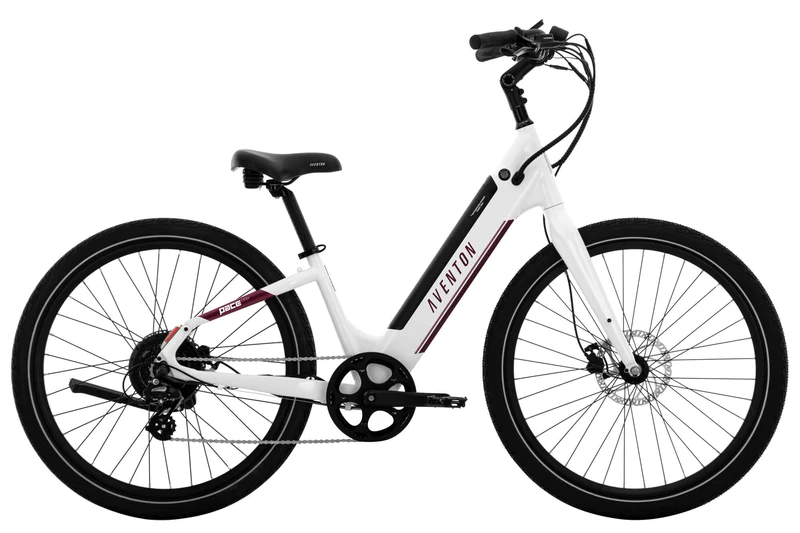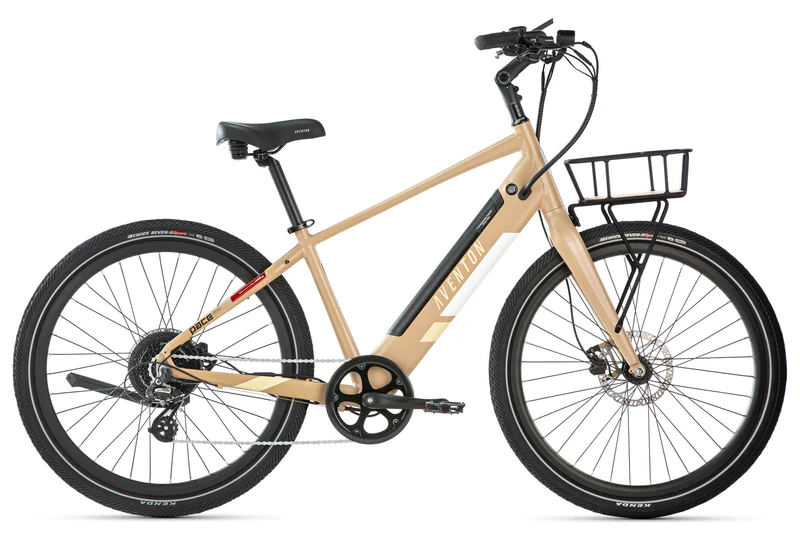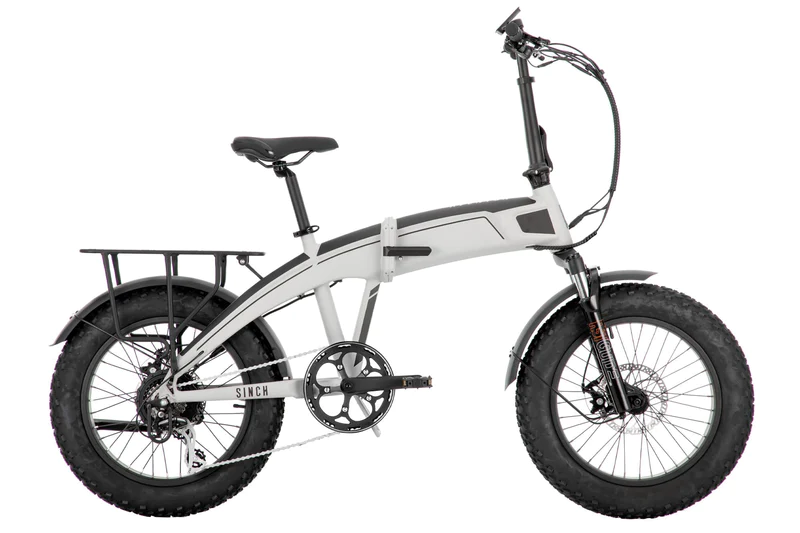Where do I start?
Before you buy an electric bike, there are many factors to consider. If you don’t know anything about electric bikes, the wide variety of features and options can be overwhelming. However, here are some factors to consider when choosing an e-bike.
Purpose: What will you primarily use the e-bike for? Commuting to work, running errands, or leisurely rides? Knowing the purpose will help you determine the type of e-bike that is best for you.
Type of e-bike: There are several types of e-bikes, including road, mountain, city, and hybrid bikes. Each type is designed for a specific purpose and terrain, so choose the one that best suits your needs. They can also be categorized by the type of frame.

Step-through types are easier to mount because they lack the horizontal support bar. Because of the lack of horizontal bar stabilization, materials generally need to be heavier to compensate. All things being equal, the extra weight increases power consumption and therefore reduces range.

Step-over bikes do have the horizontal stabilizing bar. This type of frame is often called a triangle frame. These bikes can be lighter and suitable for all types of uses and terrains. However, the lightweight material may not be suitable for extreme conditions or heavy riders. Accessorizing has traditionally been a bit easier with step-over bikes because of the horizontal bar, but this is changing.

Foldable bikes offer the advantage of improved portability and storage.
Motor turning power : The turning power of the motor determines the speed, acceleration and range of the e-bike. If you plan to use the bike for hilly terrain, you may need a higher-powered motor. Obviously the higher the power, the better the speed and acceleration at the cost of more energy consumption and reduced mileage. Turning power is measured in torque or the units Newton-meters (Nm). Torque less than 50 Nm is considered low torque, and above 65 Nm is considered high. You may also see motors compared in units of watts. Many motors will have a nominal rating that can be ramped up to produce more speed, but again at the cost of more battery consumption.
Battery voltage: The majority of e-bikes currently available today are based around a 36 or 48-Volt battery. Voltage is basically a measure of the “push” imposed on the electrons. Naturally, the higher voltage batteries produce more “push” and allow faster speeds.
Battery capacity: Battery capacity determines how much total power a battery can store and release. In e-bikes, it is measured in watt-hours (Wh). A 100 Wh battery can produce 20 watts for 5 hours or 10 watts for 10 hours, and so on. This unit will determine the distance an e-bike can travel on a charge, based on the consumption of the electric motor. There are many things that determine the consumption of the motor. How much pedal assistance is being used, the weight of the person, wind conditions and terrain are among those. Temperature also affects battery performance. The lower the temperature, the less power a battery can output.
Battery life: Battery life is greatly affected by charging habits. In general, poor charging habits will reduce battery life. It is a good idea to not let the charge drop to near zero or to leave it fully charged for prolonged periods, like in storage.
Comfort: The comfort of the e-bike is important, especially if you plan to use it frequently. Make sure it has a comfortable seat, handlebars, and suspension. Also, pay attention to the position of the seat in relation to the pedals. For longer excursions, it may be more comfortable to have a more upright position rather than leaning forward. Importantly, make note of the weight of the bike. If you plan on carrying your bike into buildings or up steps, a lighter frame will make this easier.
Price: E-bikes can range in price from a few hundred to several thousand dollars. Determine your budget before making a purchase. Remember you get what you pay for.
Range:
Electric bikes are usually rated on expected range, based on the battery and motor. These estimates are usually expressed in a range of ranges, for example 25-45 miles (or km). These ranges are only an estimate since there are many factors that can affect range.
- Battery capacity: The capacity of the battery is measured in watt-hours (Wh) and indicates how much energy the battery can store. A higher watt-hour rating generally means longer range. Typical values range from 250 Wh to 750 Wh.
- Motor efficiency: The efficiency of the motor determines how much power is used to propel the bike. A more efficient motor will use less energy, resulting in longer range.
- Terrain: The terrain you will be riding on can impact the range of the e-bike. Riding uphill or through rough terrain will use more energy and reduce the range.
- Rider weight: The weight of the rider can also impact the range of the e-bike. Heavier riders will require more power to move the bike and will have a shorter range.
- Riding style: The way you ride the bike can also impact the range. Riding at high speeds or using the motor excessively can drain the battery faster and reduce the range. Pedal assist and throttle naturally consume more electricity and lower range.
- Tire type: Different tire treads, widths and size all effect range.
Keep in mind that this is just an estimate, and actual range can vary depending on the factors mentioned above. It is always a good idea to test ride an e-bike to get a better sense of its range under your specific riding conditions. Before purchasing an e-bike, test ride it to ensure it meets your needs and is comfortable to ride. There is really no substitute for getting on the bike and getting a feel for it.
What are the pros and cons?
Electric bikes, or e-bikes, have several advantages and disadvantages to consider before making a purchase. Here are some of the most common pros and cons:
Pros:
- Eco-friendly: E-bikes are environmentally friendly and emit zero greenhouse gases. They help reduce air pollution and traffic congestion when compared to internal combustion engine cars.
- Cost-effective: E-bikes are generally more cost-effective than cars, motorcycles, or public transportation in the long run. They require minimal maintenance and are cheaper to operate than traditional vehicles.
- Health benefits: E-bikes can provide a moderate level of exercise that can help improve cardiovascular health and reduce stress. They also provide pedaling support for longer trips or when the user might not be conditioned for long periods of exertion.
- Increased mobility: E-bikes can make it easier for people with mobility issues to get around and travel longer distances.
- Faster travel: E-bikes can help you travel faster than traditional bicycles, particularly on hills or longer distances.
Cons:
- Cost: E-bikes can be more expensive than traditional bicycles, particularly models with more advanced features and technology. As a result, theft is a bigger risk than a regular bike. Some e-bikes come with anti-theft features that add to expense, but make theft less likely and recovery more likely.
- Weight: E-bikes tend to be heavier than traditional bicycles, which can make them more difficult to transport or maneuver.
- Range limitations: E-bikes rely on batteries, which can limit the range of travel before needing to be recharged. This can be a drawback for longer journeys or those without access to charging stations. The good news is that they are charged by the typical household outlet.
- Maintenance: E-bikes require more maintenance than traditional bicycles, especially if the battery or motor requires servicing.
- Safety concerns: E-bikes can reach higher speeds, which can increase the risk of accidents or collisions. It is important to follow safety guidelines and wear protective gear while riding.
What is the next step?
Decide which factors are most important to you. What are you going to use the bike for? Is comfort most important? What is my budget? Do you have physical limitations? Do you need connectivity? Once you have decided, search for reputable manufacturers and product recommendations from users and experts. Reliability and customer support should also be considered. As technology develops, features will improve, move manufacturers will enter the market and prices will trend downward. E-bikes are here to stay!

